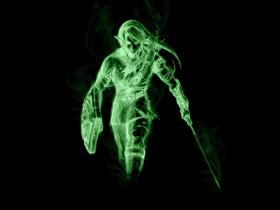A Day in the Caloris Basin
Welcome to Solaris, traveller! This is a slower-than-light science fantasy set in our own solar system.
About Solaris | Guide to Solaris | Prologue
About Solaris | Guide to Solaris | Prologue
On Earth, we think of a day as one rotation around the sun. Because our planet spins so much faster around itself than it does around the sun, one rotation is the same as one solar day. This is not the case on Mercury. Mercury takes 58 days to rotate around itself. You might think this means a Mercurian day is 58 earth days. This is true for one definition of day (the time it takes for a planet to complete a rotation) but not if you mean day in the colloquial sense, where it's one full day and night cycle. A full day and night cycle takes 176 days, or three rotations. Confused? Let me explain.
Mercury's orbit is, to put it mildly, odd. It makes sense that it has the fastest orbit out of any planet (88 days) as it is the closest to the sun, but not only is the orbit the most eccentric of all the planets in the solar system, with a perihelion of 46 million km and an aphelion of 70 million km, for every two orbits the planet spins around itself three times. This means that for every two Mercurian years, there is one Mercurian solar day. But wait, you might say. How does three spins and two orbits make one solar cycle?
To help understand and visualize the orbit and rotation of Mercury, we're going to follow the Caloris Basin through a Solar Cycle. The Caloris Basin is the hottest spot on Mercury, as they are directly under the sun at perihelion. We will be starting during noon, since that is when the Caloris Basin are at perihelion. Bear with me on that.
First Rotation
We begin at noon in the Caloris Basin (1). This is an especially interesting part of the solar cycle, as the sun begins to travel eastward in the sky. This is because Mercury's orbit speeds up closer to the sun. However as we leave perihelion, the sun stops, and then resumes it's normal westward path across the sky by the time we have made our first quarter rotation (2). I believe this is the point at which the temperature of the Caloris Basin peaks, as the long noon has had plenty time to warm up the surface. Mercury has completed three quarters of a rotation (4) by the time the Dusk Phase begins. As we complete our first rotation (5), the Caloris Basin enters the Noctural Phase.Second Rotation
Starting where we left off, it is night in the Caloris Basin. The surface temperature starts to drop below freezing as the heat leaks into space due to Mercury's lack of a proper atmosphere. As we reach perihelion again (7) the Caloris Basin is now facing space. Three quarters into the second rotation (8) is likely when the Caloris Basin is at its coldest. We near dawn as the second rotation (9) is completed.Third Rotation
Mercury's third and final rotation of a Solar Cycle starts at the end of the Nocturnal Phase. The Dawn Phase begins around a quarter into this rotation (10), and ends as Mercury is halfway spun (11). Things quickly heat up as the Caloris Basin turn to face the sun once more (12), and soon an entire Solar Cycle is complete.Notice: This article is a stub. It may be expanded later!












Shit sounds weird, y'all. O_O I can barely follow, but it makes sense.
Too low they build who build beneath the stars - Edward Young
Oh yeah, it's really weird! I tried my best to make it digestible. In the end, the thing you need to know is that Mercurian days are really, really long. How exactly it works isn't as important.